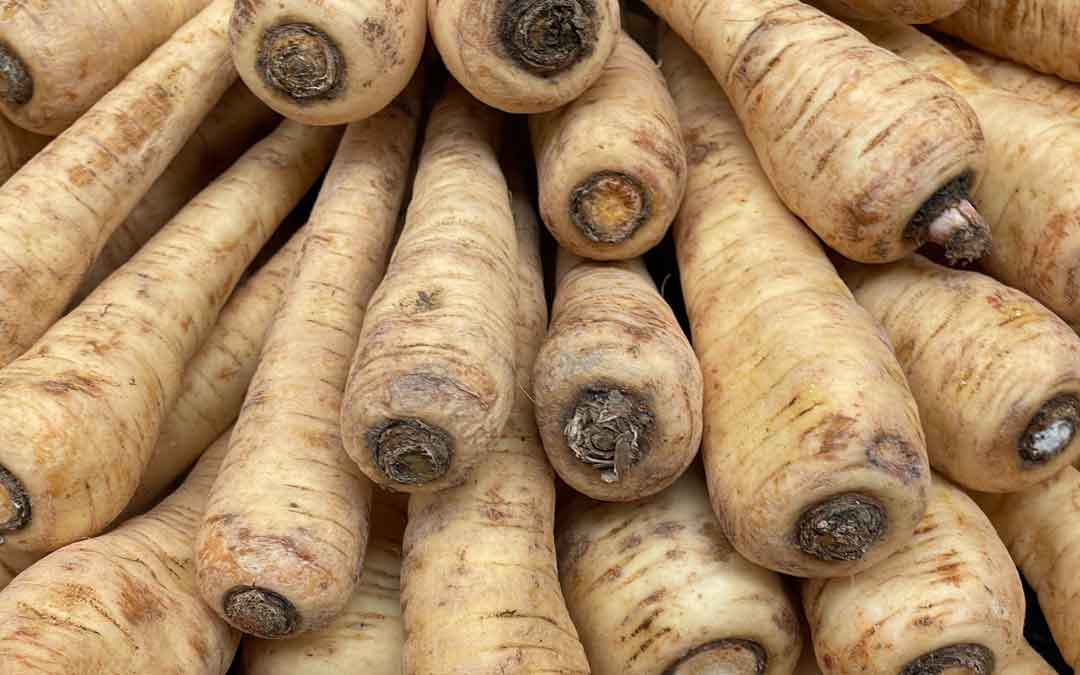Growing perfect parsnips

Top tips for growing parsnips
- use fresh seed
- cultivate the soil to a fine tilth
- keep ground moist from seed sowing to emergence of seedlings
- thin seedlings at 5-6 weeks
My survey this week (last week of May) revealed that parsnips on average are $12.50 per kilo and carrots by comparison are $2.50. This makes parsnips very expensive so why not grow your own? Growing pricey vegetables at home is a sure fire-way of reducing your weekly vegetable spend and it is easy to do.
Position
Parsnips love a sunny, open position that is well drained. Don’t worry about frost as frost actually sweetens the root, working wonders for flavour just before harvest. Roots will not freeze in the ground in our climate.
Soil
Soil preparation is vital. Like all root vegetables, parsnip does best in soil prepared to a fine tilth. Remove any roots, clods or stones and cultivate soil until fine and powdery. This allows the roots to develop unimpeded and results in long, straight parsnips. Parsnips themselves aid the development of microbial activity in the soil. Soil pH should be between 6-7.
Sowing parsnip seed
Seed must be fresh. Sowing it in the first 4-6 months is best and it will not last beyond one year. At the one year stage, it will be less viable so plant more than required to compensate for low germination.
Plant in furrows about 2cm deep. These are best made using the side of a hoe. The soil that mounds up on each side of the furrow should be raked across the furrows to backfill them. Rake across the furrows, backwards and forwards, removing any clods as you go.
Seed should be sown at intervals of about 6-7cm and later thinned out. The seed is of sufficient size that you can sow individual seeds for good spacing. Rows should be 30cm apart. Water well once seed is sown and then water twice a week deeply until seedlings emerge. Keep the soil well watered after that.
Parsnip, like all root vegetables, grow well in wicking beds where consistent water enables them to develop long, straight roots and prevents forking.
Thinning parsnip seedlings
Seed is slow to germinate. It needs temperatures below 12C to geminate so no point in sowing it in warmer weather. Seedlings may take 3-4 weeks to emerge from the soil. Once they are 5-6 weeks old, thin seedlings to about 12cm intervals. Imagine the diameter of the crown of the parsnip size you want to grow and use that as a guide for spacing. Allow for the full size plus an interval before the edge of the next parsnip. The bigger the parsnip, the more space you will need between plants. Pulled seedlings do not re-establish well, if at all.
Weeding
Weed by hand and not by hoe to protect the emerging crowns and to prevent easy penetration by damaging larvae (see pests below).
Harvesting parsnips
Parsnips are ready for harvest between 120-180 days. Succession planting is a good idea so that they are not all ready at once.
Fertiliser
Parsnip does not need fertiliser and in particular high nitrogen manure should be avoided. Fertiliser makes the tops grow at the expense of the root, and manure causes forking of the roots.
Pests and diseases
Carrot Root fly
Carrot root fly produces black, eaten-out holes in the roots of carrots and parsnips, (also dill and parsley). The carrot root fly lays eggs on the leaf, and the larvae bury down into the soil and feed off the roots. An orange colour on the crown indicates carrot root fly larvae is working below ground. It can’t be cured but in subsequent plantings remove all old carrots or parsnips, plant in new ground and use a fine net to keep this small black fly out. Hand weed rather than hoe to prevent larger spaces developing around the root which enable larvae to descend easily.
Parsnip canker
This affects the crown and appears as an orange or brown colour if caused by Mycocentrospora acerinai or purple or black colouration if caused by Itersonilia pastinacae, both soil borne fungi. Drought, water logging, crown damage, acid soil, or repeated planting in the same patch are the main causes. It is possible that improperly cleaned seed may also carry parsnip canker but this is a commercial problem and there is nothing the home gardener can do about this.
Uses
Parsnip was once only a soup or stew staple but modern cuisines employ parsnip in a wider range of dishes from parsnip chips to desserts.
Free, fresh seed is available through Robin Gale-Baker. Contact sustainablemacleod@gmail.com to arrange collection.
Written by Robin Gale-Baker
